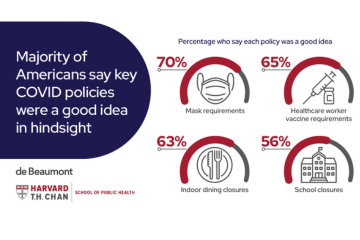
This trend, which appears to have been initiated in the early to mid-twentieth century, is not only leading to a lower quality of life and reduced economic productivity, but is a primary contributor to this country’s astronomical health care costs. Chronic diseases account for 80 percent of all health care costs today compared to only 20 percent in 1900.
In accordance with generations of studies citing a need for more effective preventive care, the de Beaumont Foundation, Duke Community and Family Medicine, and the Centers for Disease Control and Prevention have created a new initiative – “Practical Playbook: Public Health & Primary Care Together” – to support the project-based integration of public health and primary care.
The Practical Playbook is designed to achieve three objectives: to improve population health, better manage illness (especially chronic disease), and mitigate healthcare costs. In practice, it gives local health administrators, public health officials, and primary care providers the means to offer more comprehensive health care both within and beyond a clinical context.
“We developed the Practical Playbook based upon years of research and anecdotal evidence that show that when local health departments and primary care providers work together, they can help communities get healthier and help both patients and insurers save on preventable illnesses,” said Dr. Lloyd Michener, Professor and Chair of Duke Community and Family Medicine. “Our goal now is to take these local successes and apply them on a national scale.”
Consider chronic asthma, which is growing every year and at last count (in 2007), cost the United States $56 billion in medical care, lost school and work days, and early deaths. Today, the best that primary care providers can do is treat an individual patient’s repeat episodes or “flare-ups.” If there were an ongoing collaboration with the local health department, however, public health officials could collect real time data from multiple practices and emergency rooms and compile information that would identify asthma clusters. This would allow the health department to take immediate action to investigate whether there is an environmental cause that can be addressed to control the ongoing cases and to prevent the development of new ones.
To promote this kind of public health and primary care collaboration, the Practical Playbook initiative has developed a web-based tool in three parts. Part 1, “Learn,” explains the theoretical background of public health and primary care integration. Part 2, “Do,” outlines action steps for starting your own collaborative project to engage with a health concern in your community such as heart disease, obesity, or asthma. Part 3, “Share,” provides case studies of successful collaborative projects, complete with direct contacts to the project leads.
“Despite years of conferences, seminars, and reports from the medical community lauding the merits of public health and primary care integration, we have yet to see any meaningful progress towards improving population health,” said Dr. James Sprague, CEO of the de Beaumont Foundation. “Facilitating collaboration between primary care providers and local health departments is a crucial element in addressing the social determinants of health and working long term to make all Americans live longer, healthier lives.”
Dr. Denise Koo, Senior Advisor for Health Systems, Centers for Disease Control and Prevention added, “The Practical Playbook will be a game-changing tool for helping communities deal with the unchecked rise of chronic diseases like obesity, diabetes, and heart disease. It will be a cornerstone in our efforts to shift to a system focused on keeping our communities healthy rather than putting a Band-Aid on after they get sick.”
To learn more about the Practical Playbook, visit www.practicalplaybook.org.




